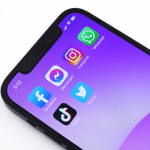Introduction.
Voice messages have become a big part of how we communicate, especially on WhatsApp. They’re convenient when typing feels too slow or when a quick explanation is needed. But there’s a catch—not everyone can always listen to them.
Imagine being in a meeting, a noisy place, or simply not in the mood to press play and focus on someone talking. That’s where WhatsApp’s latest feature comes in: voice message transcripts.
This new addition is meant to make voice messages accessible and easy to use in any situation.
Let’s dive into what this feature is all about, why it matters, and how it could change how we use WhatsApp daily.
What Are Voice Message Transcripts?
Voice message transcripts are exactly what they sound like. Instead of listening to a voice note, WhatsApp can now turn it into written text.
Once someone sends you a voice message, you’ll have the option to read its content directly in the chat.
This feature uses advanced speech recognition technology to convert spoken words into text accurately.
It supports multiple languages, although its performance may vary depending on the clarity of the voice, background noise, and the speaker’s accent.
Why Does This Feature Matter?
1. Accessibility for All
Not everyone can listen to voice messages. People with hearing impairments, for instance, have often been left out of these conversations. By introducing transcripts, WhatsApp ensures everyone can stay connected and informed, no matter their circumstances.
2. Flexibility in Different Environments
Sometimes, you just can’t listen to a voice message. Maybe you’re in a public space, working in a quiet office, or on public transport. Having the message in text form means you won’t have to wait until later to know what it says.
3. Time-Saving Convenience
Scrolling through a long voice message trying to find a specific detail can be frustrating. Transcripts let you quickly scan through the text to find the information you need without having to listen again.
4. Breaking the Language Barrier
Voice transcripts also make it easier for users who aren’t fluent in the language of the speaker. Reading can sometimes be more straightforward than understanding a fast or unclear recording.
How Do I Use the Feature?
1. Update Your WhatsApp.
Make sure you have the latest version of the app installed. The feature is being rolled out gradually, so if you don’t see it yet, it might just take a little longer to reach your device.
2. Open a Voice Message.
When you receive a voice message, tap on it. You’ll see an option to view the transcript if the feature is available to you.
3. Check and Review.
Read the transcript directly within the chat. If something seems off, remember that the feature might not be perfect and could misinterpret some words.
4. Privacy Settings.
WhatsApp emphasizes that the transcription process happens on your device, using end-to-end encryption. This means your voice messages remain private and aren’t shared with any servers or third parties.
FAQs About WhatsApp Voice Message Transcripts
1. Is the feature available for all users?
Not yet. WhatsApp is rolling it out gradually. If you don’t see it, ensure your app is up to date and keep an eye out for updates.
2. Does it work offline?
Yes, the transcription happens directly on your device, so you don’t need an internet connection for the conversion once the voice message is downloaded.
3. What if the transcription is wrong?
Accuracy depends on factors like the speaker’s accent, background noise, and speech clarity. While the feature is highly accurate in ideal conditions, it might misinterpret unclear audio.
4. Can I disable the feature?
Yes, if you prefer not to use transcripts, you can turn off the feature in the app settings.
5. What languages does it support?
WhatsApp is working to support multiple languages, but the full list isn’t available yet. Expect the major global languages to be included first.
Challenges and Potential Limitations
While the feature is exciting, it’s not without potential drawbacks:
- Accuracy Issues: Like any speech-to-text technology, there’s a chance of errors, especially with strong accents or poor audio quality.
- Device Requirements: Since the processing happens locally, older devices might struggle with this feature or experience delays.
- Language Coverage: If your language isn’t supported yet, you might have to wait for future updates.
A Step Toward Smarter Communication
WhatsApp’s voice message transcripts show how messaging apps are evolving to meet the needs of their users.
Features like this make communication faster, simpler, and more inclusive. It’s not just about convenience—it’s about breaking down barriers, whether they’re physical, situational, or linguistic.
It’s exciting to think about how features like this might develop in the future. Could we see better multilingual support, faster processing, or even the ability to edit transcripts? For now, though, it’s a huge leap forward.
What Do You Think?
Do you see yourself using voice message transcripts often, or are you happy sticking to regular voice messages and texts? Let me know your thoughts!





GIPHY App Key not set. Please check settings